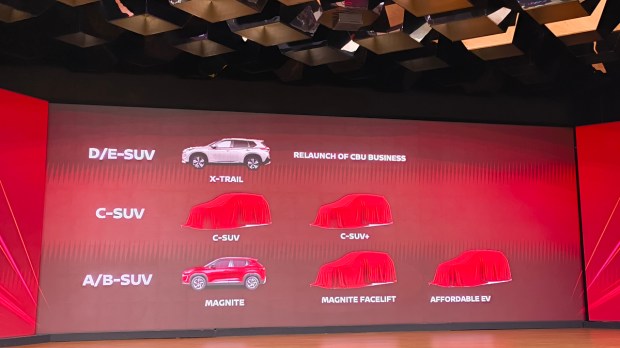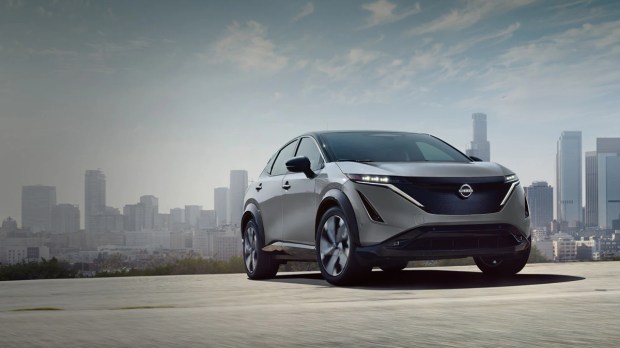Nissan will re-enter the CBU business in India with the launch of X-Trail. The company will only launch SUVs and crossovers in India going forward.
Nissan, like most auto OEMs, has faced a challenging phase in the last 4-5 years post the outbreak of the Covid-19 pandemic. But while other auto manufacturers are slowly but gradually finding back their rhythm, Nissan’s struggles, especially in the Indian market, seem to linger on.
It tricked down to a one pony brand with Magnite being the only model in its India lineup. Further, the Japanese carmaker had to shut down its Datsun brand that offered low-end and affordable entry-level cars. However, Nissan has now announced its new product strategy called “The Arc” which will witness the launch of multiple new models in the coming years.
Read More: Nissan Ariya EV to Launch in India as CBU, Check Range and Features
Nissan to become all-SUV lineup
In a recent interaction with Express Drives, Saurabh Vatsa, Managing Director, Nissan India, laid the roadmap for the company. Nissan will launch as many five models, all SUVs, between now and 2026. It will start with the launch of the new fourth-gen X-Trail which recently made its debut in India. The premium 7-seater SUV is slated to go on sale from 1 August with 150 units lined for the first set of customers.

This will be followed by two mid-size SUVs— a five-seater and a seven-seater— most likely to be based on the CMF-C platform co-developed by Nissan alongside Renault. This is the same platform that underpins the upcoming Renault Duster slated to hit the Indian market towards the end of 2025.
Although Vatsa didn’t explicitly reveal that the upcoming Nissan mid-size SUV duos will be based on the Duster and Bigster concept, he mentioned that both models will be completely different from their European counterparts as well from each other, when it comes to design. However, Vatsa did explicitly mention that all upcoming Nissan models will cater to the SUV category.
Read More: All-New Mini Cooper S Launched In India, Price Starts At Rs 44.90 Lakh
Furthermore, Nissan will also bring a fully-electric model but Vatsa refused to share any specific details of the EV. The Japanese brand currently has two EVs in its international portfolio— Leaf and Ariya, and given Nissan’s commitment to become an all-SUV brand in India, the Ariya seems to be the realistic choice. The other model slated to launch in the next two years is the facelited Magnite. The sub-compact SUV made its debut in late 2020 and is expected to receive a mid-cycle facelift soon.

Ramp up in production
Under Nissan’s new growth programme called ‘The Arc’, the company’s next objective is to ramp up its exports with 100,000 units shipped to overseas markets per annum in the next three years. Nissan India also intends to sell a similar number of units every year in the domestic market as well. This means Nissan has to multiply its existing production capacity to three in the coming three years.
On the whole ICE vs EV debate, Vatsa took a safe stance claiming that it is rather ICE and EVs hinting that the market is wide and open enough to accommodate both categories. If you look at the EV penetration in the markets, about a percentage and a half on the tip at the moment, so it’s not really eating up on ICE in a big way. You add hybrids, it goes up to about 4%. So the balance of the market is still all ICE, whether it’s petrol or diesel.”
Read More: Hero Xtreme 160R 4V launched with new look, enhanced features | Here’s all you need to know
Incentivise hybrid vehicles, Lowering of GST
Recently the Government of Uttar Pradesh revised its EV policy where hybrid vehicle owners have supposedly offered some key incentives including tax benefits and subsidised registration fee. When asked if a similar policy could be or should be implemented nationwide, Vatsa was hesitant to commit but admitted that “the government has to look at hybrids in a different way, it’s not that hybrids are too far away in terms of how they are helping aid carbon neutrality”.

He further added, “If you look at the EV penetration, it’s not gone beyond a percentage and a half. So, therefore, in a country like India, where majority of electrification is also coming from, sources which are not 100% clean electricity, one needs to look at it with the right lens.”
With the Union Budget 2024 still around the corner when the interaction took place, Nissan, like many other OEMs in India, urged the government to consider lowering of GST for certain categories of vehicles. Vatsa said, “Rationalisation of GST is really required and GST definition for hybrids, EVs and ICE, especially hybrids that really start helping you with emissions. That is something which is very important. So it has to be a very holistic framework.”
Vatsa also added that most of the policies are framed around engine size and vehicle size which needs to be looked at.





































